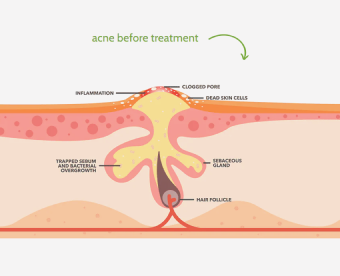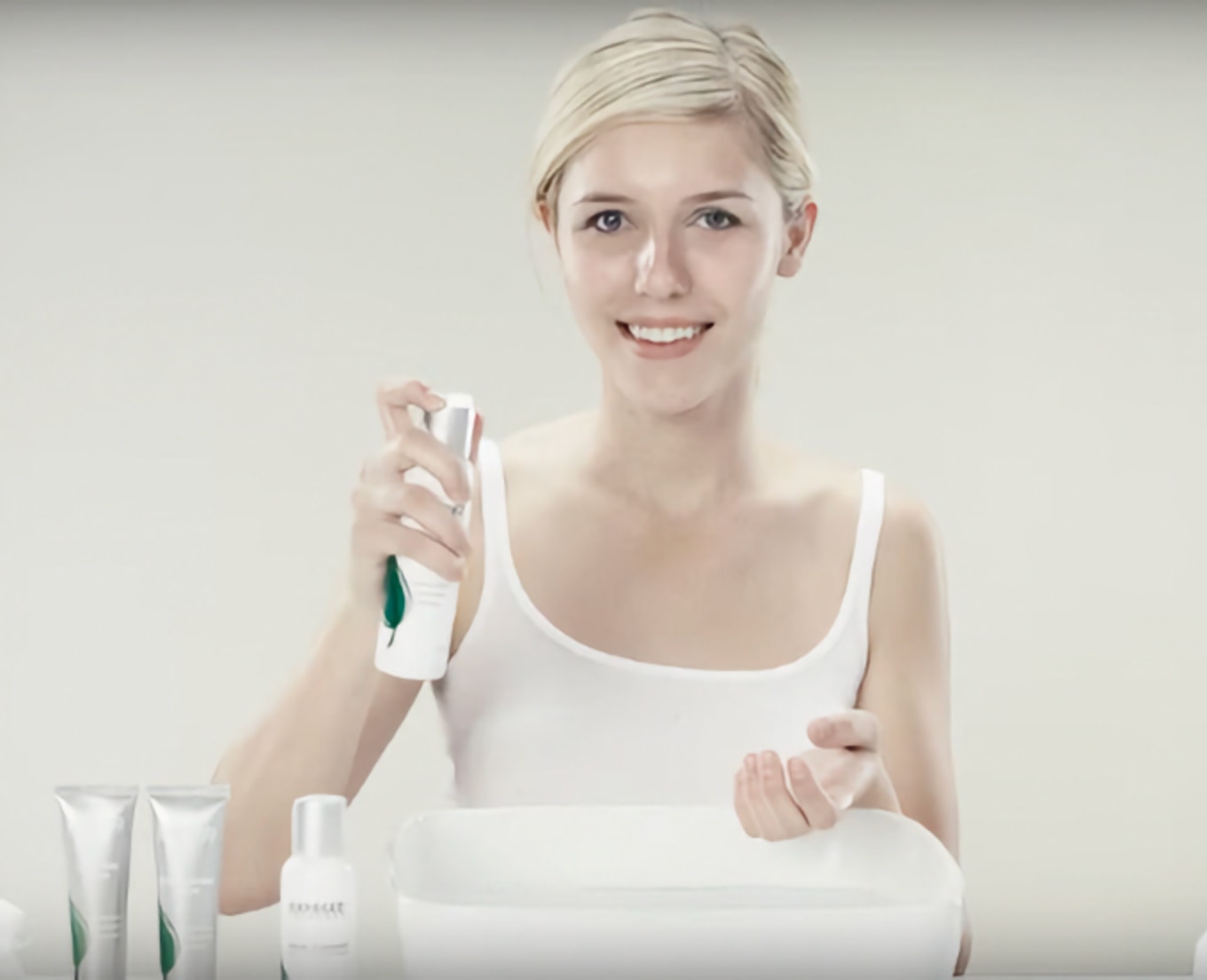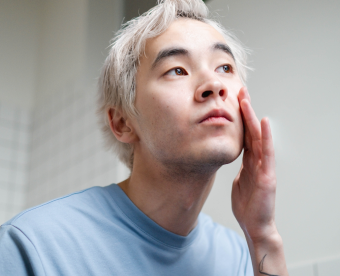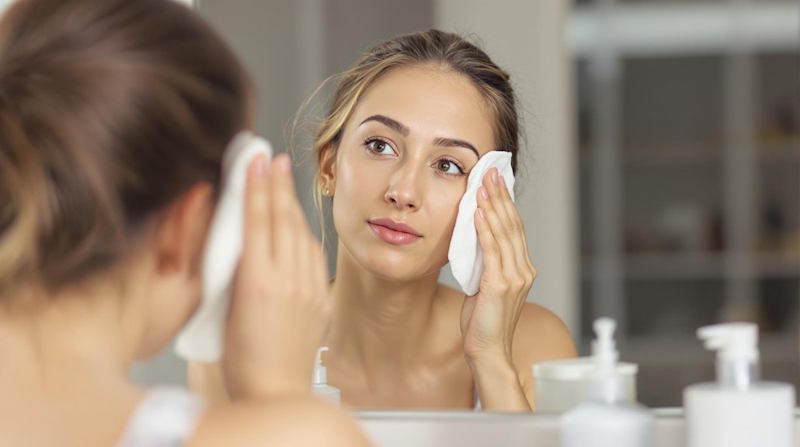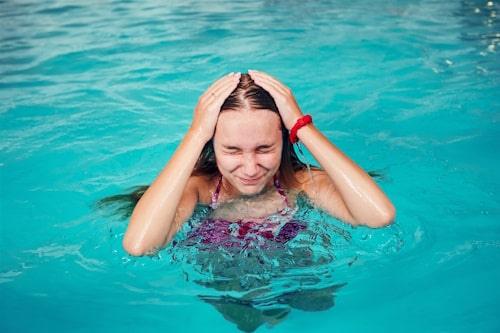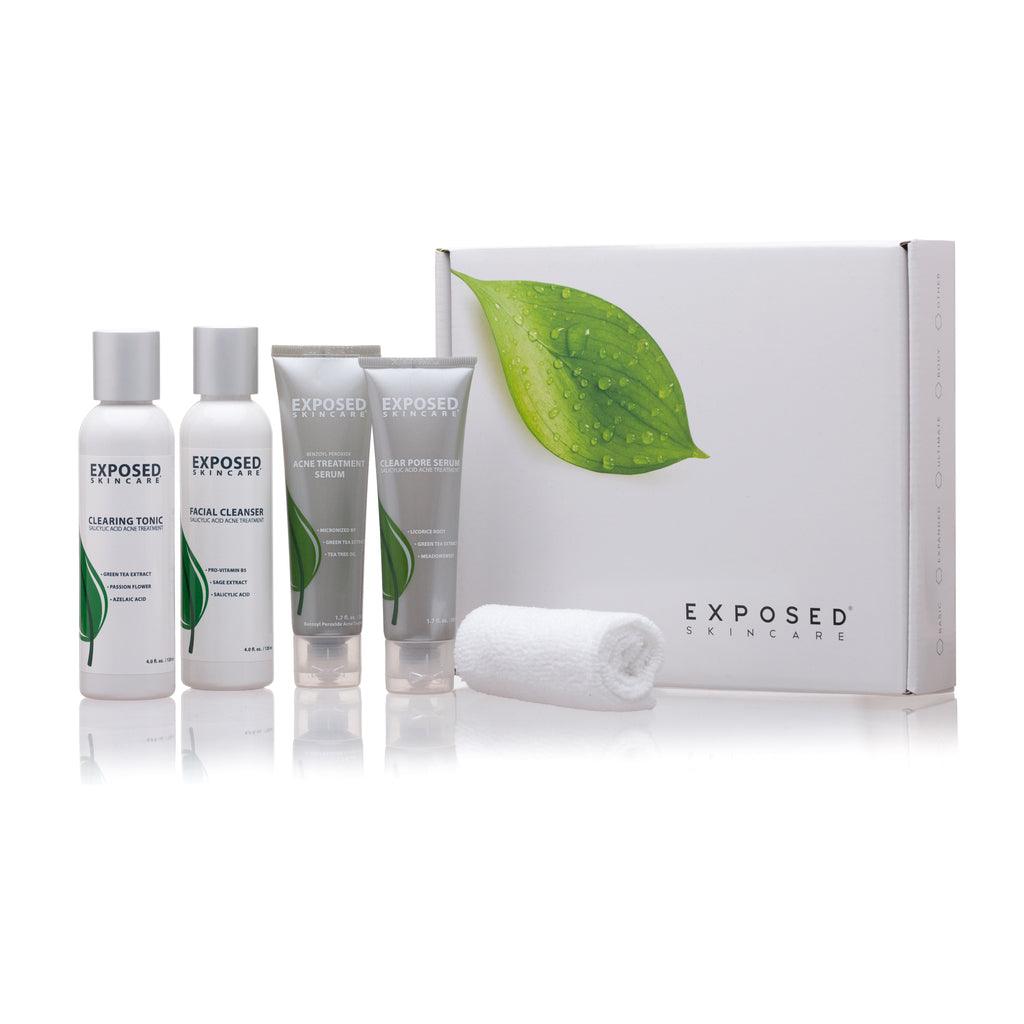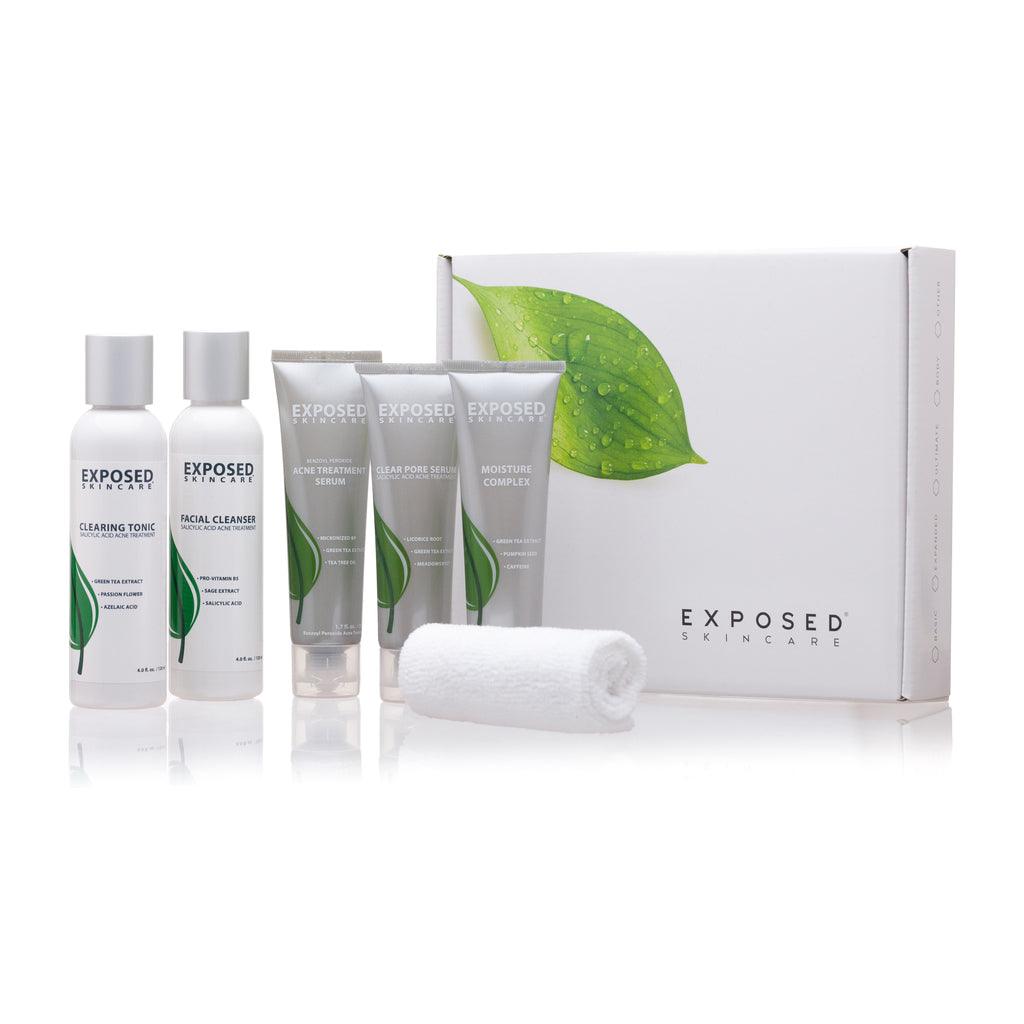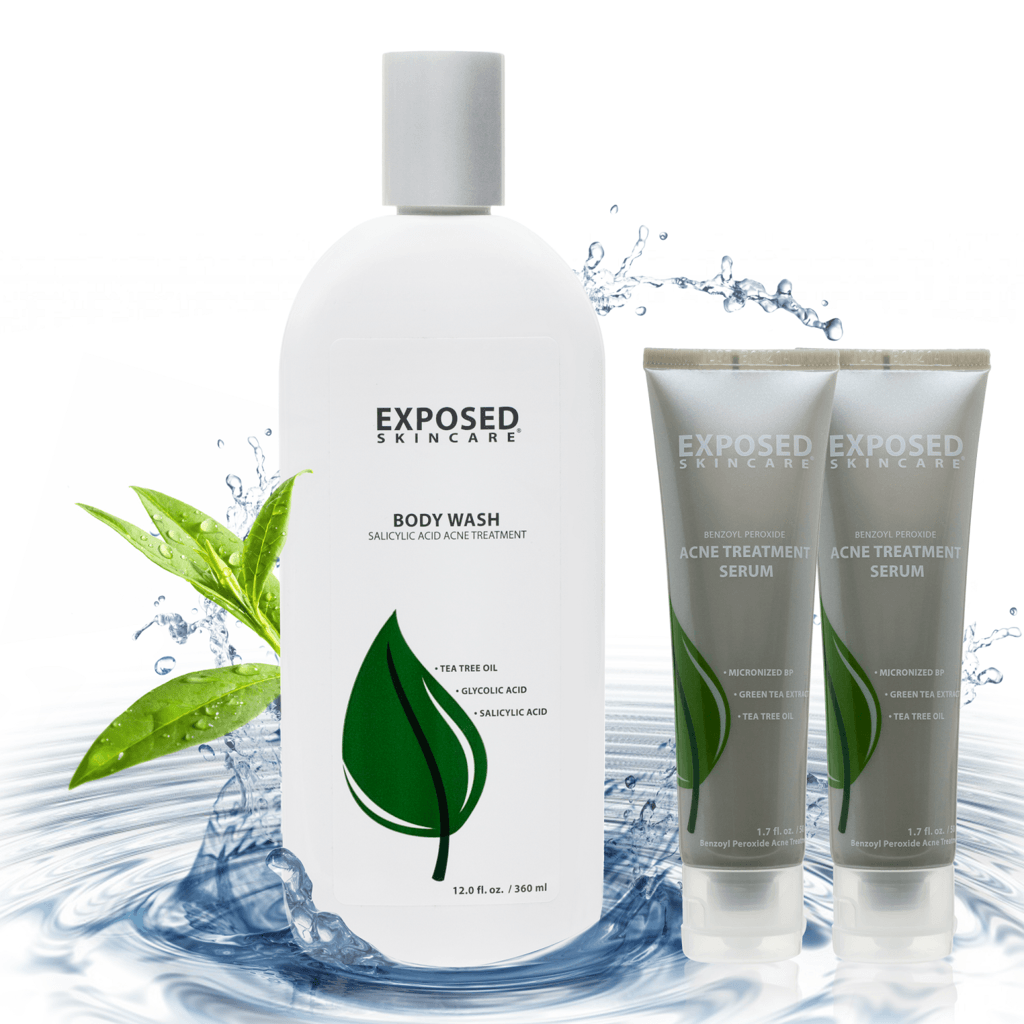Cystic acne, particularly when it manifests on the back of the neck, can be more than a minor inconvenience. It's a severe form of acne that causes discomfort and can lead to permanent scars and affect your overall confidence. This blog post aims to provide comprehensive information about the causes, treatments, and additional aspects of cystic acne on the back of the neck, helping you understand this skin condition better.
Also read: How to choose the best acne treatment
Biggest Take-Aways:
- Cystic acne on the back of the neck, a severe form of acne, is caused by factors such as overproduction of sebum, accumulation of dead skin cells, bacterial presence, and hormonal changes.
- Identification of cystic acne is based on features like large, often painful, inflamed bumps along the back of the neck, with inflammation occurring deep beneath the skin's surface.
- Treatments for this stubborn acne type range from over-the-counter products and prescription medications to lifestyle adjustments focused on cleanliness, diet, and stress management.
- Exposed Skin Care can be an effective addition to acne management routines, offering a potent formula that clears pores, reduces oil, and tackles inflammation.

What Is Cystic Acne on Back of Neck?
Cystic acne on the back of the neck is a severe type of acne characterized by large, red, and often painful bumps along the hairline and the nape of the neck. These bumps, or lesions, are pus-filled cysts that form deep within the skin when the pores, which contain hair follicles and sebaceous glands, become blocked and inflamed.
Unlike common acne (acne vulgaris), which is typically prevalent during adolescence, cystic acne can affect individuals of any age. While acne can also appear in different areas, such as acne on the face, the unique challenges of cystic acne on the back of the neck may require specific treatments and care.
Unmasking the Causes
The cause of acne, including cystic acne on the back of the neck, is multi-faceted. The condition is a result of various factors such as:
Dead Skin Cells
The surface of the skin is continuously shedding dead skin cells. However, these cells can sometimes accumulate and mix with excess sebum, leading to clogged pores. This blockage can then result in the formation of a type of acne known as a papule, or a pimple, and in more severe cases, cystic acne.
Overproduction of Sebum
Sebum is an oil produced by the sebaceous glands in our skin to keep it moisturized. However, when these glands produce excess sebum, it can lead to acne. This overproduction of sebum is often driven by hormonal fluctuations and imbalances, making acne worse.

Bacteria and Inflammation
The presence of bacteria in blocked pores can cause irritation and inflammation. This inflammatory response can lead to the development of red and pus-filled cysts characteristic of cystic acne.
Hormonal Changes
Research has shown that hormonal changes, such as those occurring during adolescence or menstruation, may play a role in the development of acne. These hormonal imbalances can lead to an overproduction of sebum, thus contributing to acne flares.
How to Identify Cystic Acne on Back of Neck?
Cystic acne is a more severe form of acne and is distinguishable by certain features:
- Large, red, inflamed bumps along the back of the neck, particularly the nape and along the hairline.
- The cysts or bumps are often painful and may feel firm to the touch.
- Unlike regular pimples, cystic acne may not have a 'head.' Instead, the inflammation is beneath the skin.
- Cystic acne can also cause scars due to the intense inflammation affecting deeper layers of the skin.
Various Treatments for Cystic Acne on Back of Neck
While cystic acne on the back of the neck is a severe skin condition, there are ways to treat it effectively. These include over-the-counter products, prescription medications, and some lifestyle changes.

Over-the-Counter Treatments
Over-the-counter products can be a first-line treatment for mild to moderate acne. These include:
-
Benzoyl Peroxide: An acne treatment that decreases inflammation and kills bacteria that contribute to acne.
-
Salicylic Acid: It works by helping the skin to shed dead cells from the top layer and slowing down the shedding of cells inside the hair follicle, preventing clogging.
-
Retinoids: Over-the-counter retinoids help clean pores and prevent future breakouts. However, they may cause irritation, so starting with a lower concentration is essential.
Prescription Medications
For severe acne like cystic acne, over-the-counter treatments might not be enough. In such cases, prescription medications are usually required. These could be topical or oral treatments prescribed by a medical professional. They decrease inflammation, kill acne-causing bacteria, or reduce oil production.
Lifestyle Changes
While medical intervention plays a significant role, making certain lifestyle changes can also help manage cystic acne on the back of the neck. These include:
- Keeping the neck clean and dry: Regularly washing the neck with a gentle cleanser can help remove excess oil and dead skin cells.
- Wearing loose and breathable clothing: Tight clothing can cause friction and trap sweat and oil against the skin, which may worsen acne.
- Healthy Diet: A balanced diet rich in fruits, vegetables, lean proteins, and whole grains can help maintain overall skin health.

Preventing Cystic Acne on Back of the Neck
Preventing cystic acne can be challenging, particularly due to the hormonal aspect. However, some practices can help prevent cystic acne or reduce its severity.
- Regularly clean the neck area, especially after sweating, with a gentle, oil-free cleanser to prevent pore clogging.
- Follow a balanced diet and stay hydrated.
- Try to minimize stress, as it can exacerbate acne.
- Use non-comedogenic skincare and haircare products that do not clog pores.
What Is Acne Keloidalis Nuchae?
Acne keloidalis nuchae (AKN) is a specific type of neck acne that mainly affects the nape of the neck. AKN is characterized by inflamed bumps and scarring, often appearing as a band along the hairline on the back of the neck. This condition is similar to cystic acne in its severity and need for treatment, although it may require different therapeutic approaches.
How to Treat Acne Keloidalis Nuchae
AKN is a stubborn condition and might need a combination of treatments for optimal results. Some of the treatments that have shown success in treating acne keloidalis nuchae include:
- Topical treatments: These can help reduce inflammation and slow the condition's progression.
- Oral medications: Oral antibiotics can help control inflammation and fight bacteria.
- Laser and light therapies: These treatments can help reduce inflammation and destroy the hair follicle, preventing further AKN lesion formation.
- Surgical intervention: In severe cases, surgical removal of AKN lesions might be required.
The Power of Exposed Skin Care in Managing Acne
Exposed Skin Care offers an effective solution for managing various forms of acne, from adolescent acne to more stubborn cystic acne and even acne keloidalis nuchae lesions. It works in a multi-pronged way to treat neck acne, hormonal acne, and acne caused by folliculitis.
Here are some benefits of using this acclaimed product:
- Potent formula: It contains a cream that penetrates the affected area of skin, helping to clear pores and get rid of excess oil produced by oil glands, a common acne cause.
- Targeted action: It directly treats acne on the neck, working to reduce inflammation, fight bacterial infection, and manage neck breakouts.
- Evidence-backed effectiveness: Its efficacy is backed by peer-reviewed studies, aligning with strict sourcing guidelines.
- Complementary to medical treatments: While some acne forms may require medical intervention, Exposed Skin Care can complement treatments prescribed by a doctor or dermatologist.
Remember, while Exposed Skin Care can aid in managing this common skin condition, it's crucial to keep the affected area clean and improve your lifestyle.
Conclusion
Cystic acne, particularly when it presents on the back of the neck, can be a daunting challenge to face. However, understanding how and why we get acne is a significant first step towards finding an effective solution. Over-the-counter treatments, prescription medications, and specialized products like Exposed Skin Care can all be crucial in helping treat cystic acne and get rid of neck acne.
However, remember that each person's skin is unique, and what works for one might not work for another. While the information and treatments mentioned here provide a solid starting point, following through with your skincare plans is always recommended. With the right knowledge and approach, you can navigate and manage cystic acne, leading to healthier and clearer skin.
Frequently Asked Questions (FAQs)
Can cystic acne on the back of the neck leave scars?
Yes, cystic acne is one of the acne types most likely to develop scars. This is because it affects deeper layers of the skin. However, effective treatment and avoiding picking or popping acne can help reduce the risk of scarring.
How long does cystic acne on the back of the neck take to heal?
The healing time for cystic acne can vary, depending on the severity and the effectiveness of the treatment. In some cases, cysts may resolve in a few weeks, while others may persist for months. It's essential to start treatment as soon as possible to expedite healing.
Why is the acne on my neck worse than the acne on my face?
The skin on the back of the neck is thicker and has more sebaceous glands than facial skin. As a result, acne here may be more severe and stubborn. Moreover, this area often comes into contact with hair products, collars, and clothing that can irritate the skin and exacerbate acne.
Can I use my face acne treatments for the acne on the back of my neck?
While some active ingredients can benefit both face and neck acne, the skin in these areas is different. Therefore, treatments may need to be adjusted. Some medications might be too harsh for facial skin but perfect for the thicker skin on the neck.
What's the difference between cystic acne and acne keloidalis nuchae?
Both are severe types of acne, but AKN mainly affects the nape of the neck and is characterized by inflamed bumps and scarring along the hairline on the back of the neck. It requires specific treatment strategies and may need surgical intervention in severe cases.

